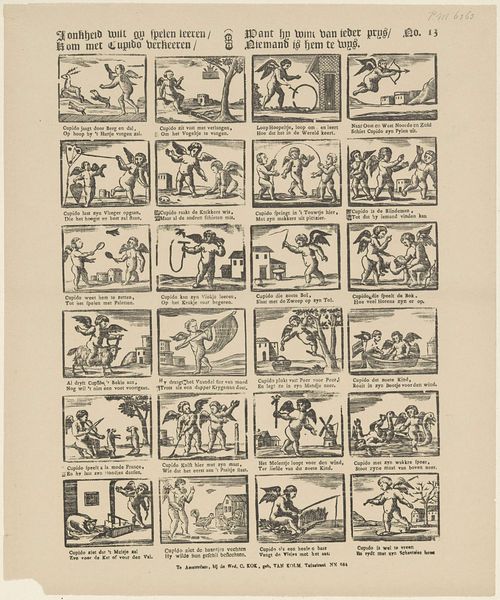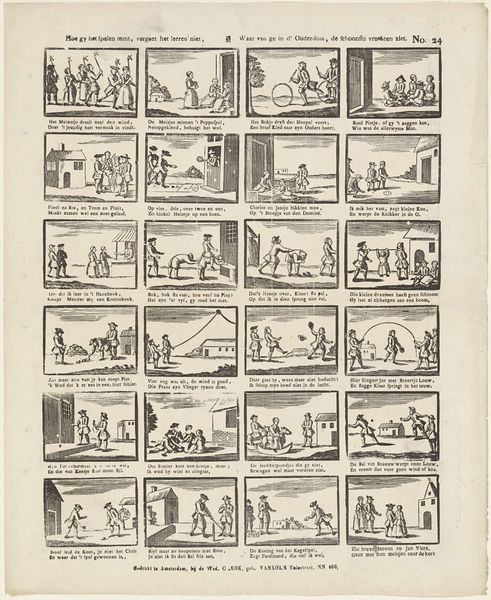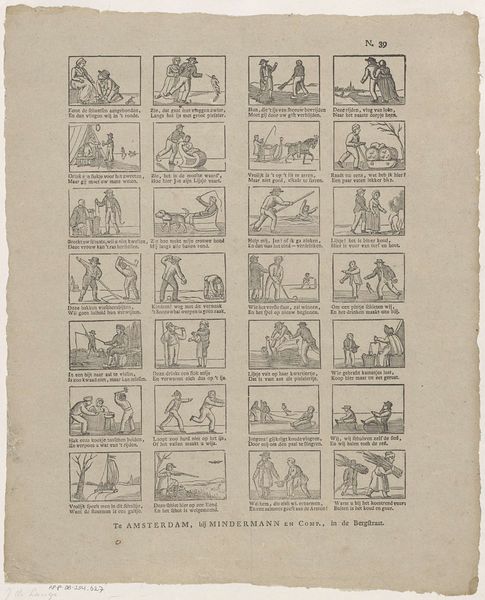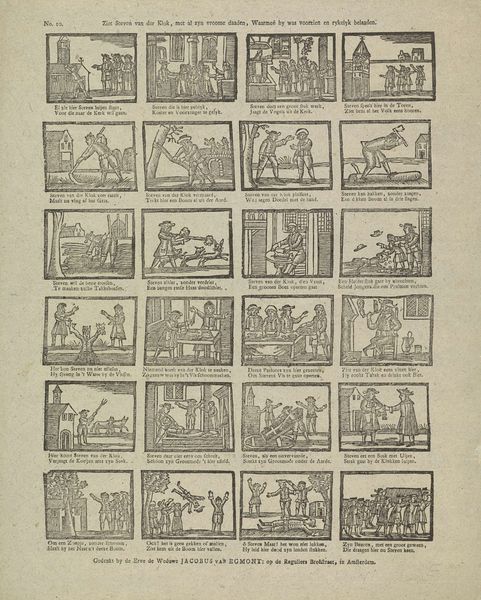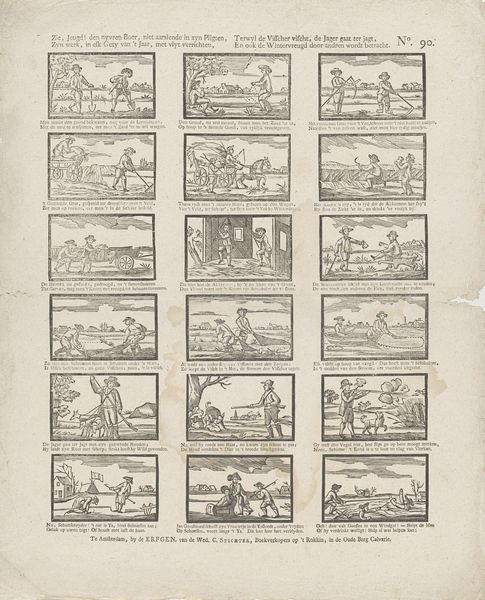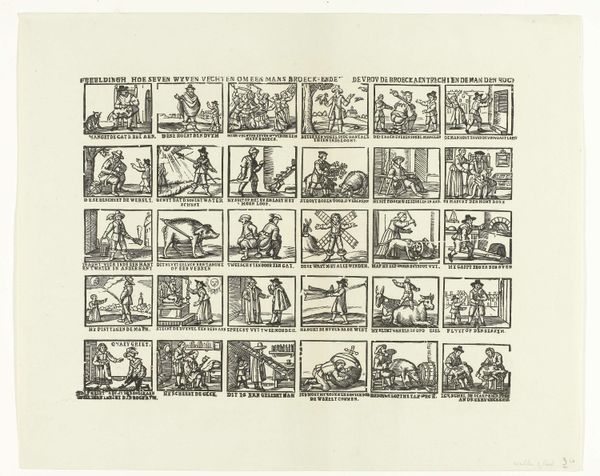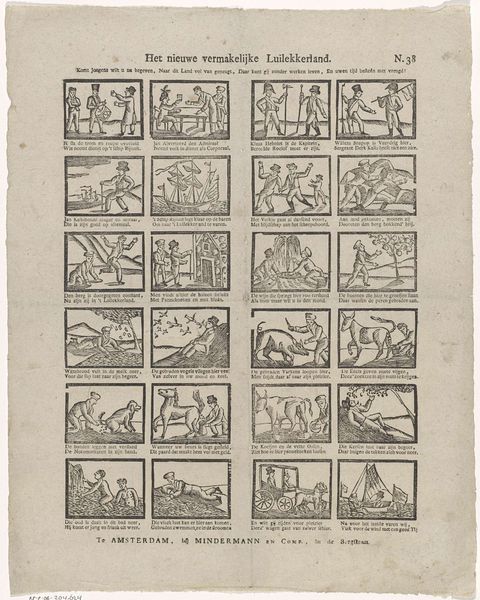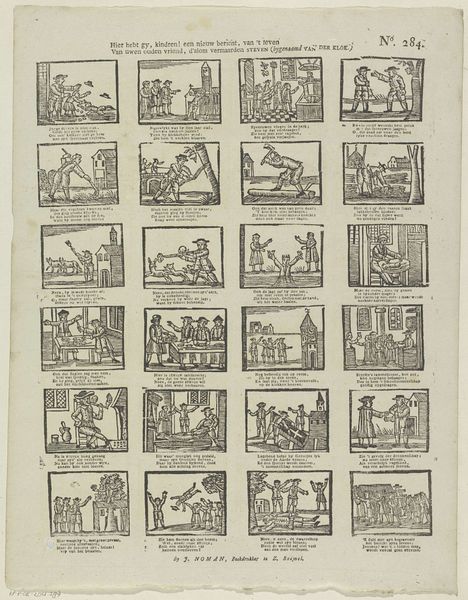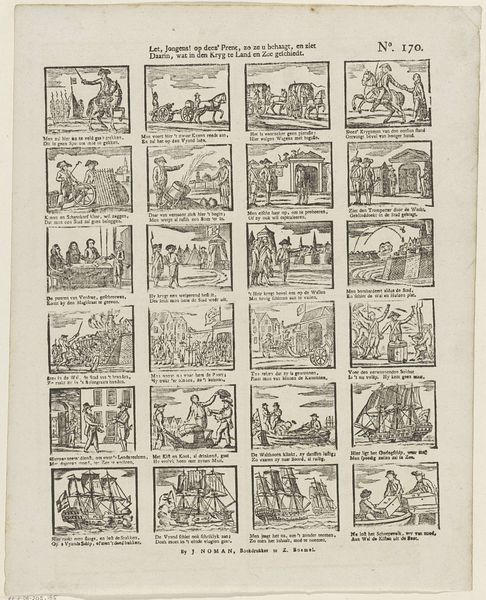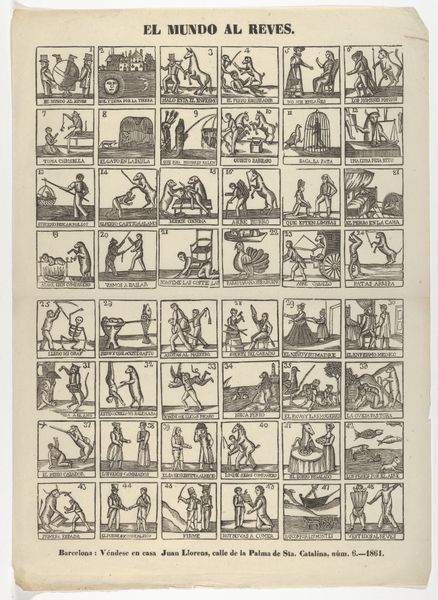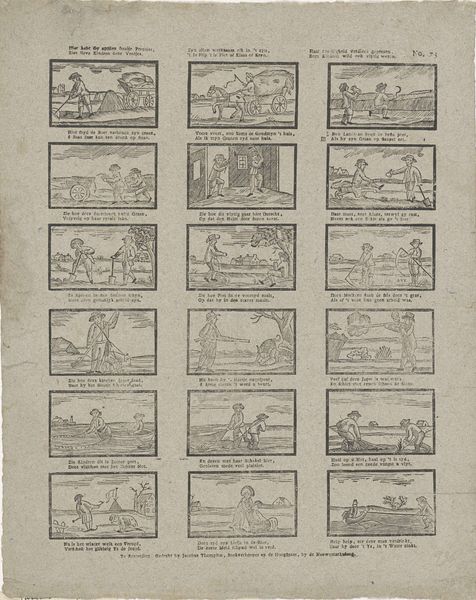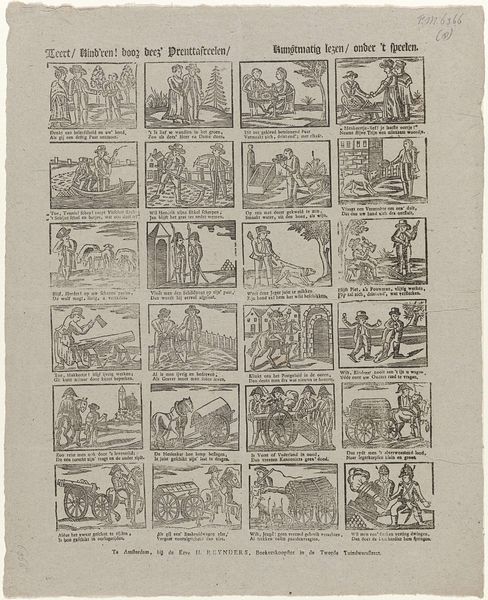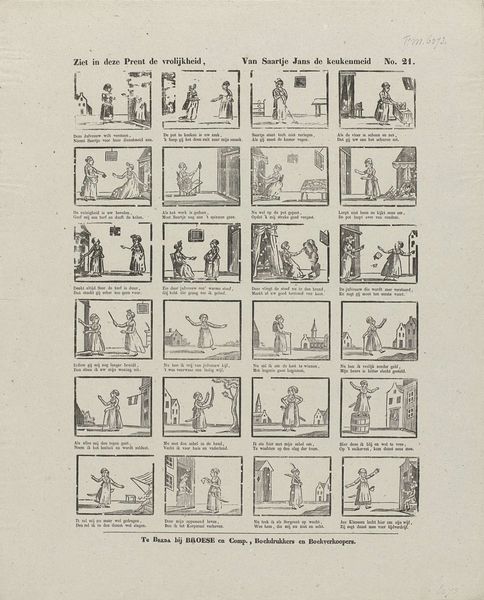
Hoe bar de winter is, hy geeft nogthans vermaak, Als men maar schyven heeft, dat is de groote zaak 1842 - 1866
0:00
0:00
print, etching
#
narrative-art
#
comic strip
# print
#
etching
#
folk-art
#
comic
#
genre-painting
Dimensions: height 393 mm, width 318 mm
Copyright: Rijks Museum: Open Domain
Curator: Welcome to the Rijksmuseum. We are standing before a fascinating etching, dating from 1842 to 1866. It's titled "Hoe bar de winter is, hy geeft nogthans vermaak, Als men maar schyven heeft, dat is de groote zaak" and was produced by weduwe C. Kok-van Kolm. Editor: Immediately, the gridded composition strikes me – it's like a historical comic strip! Each tiny scene unfolds a mini-narrative. It feels folksy, almost like a broadsheet for the masses. Curator: Precisely. The production of such prints served a crucial purpose: mass communication. The lines would have been etched by laborers onto the metal plate, each character and scene requiring manual dexterity. We see a transfer of folk tales, moral stories, and general information meant to circulate widely. The consumption and interpretation are key. Editor: Indeed. Many of the images seem to circle around common proverbs or tales focusing on work and play, or luck in different ways of life. They seem deeply ingrained in the shared experiences and moral codes of the period, so deeply so that their symbolism may not require a ton of textual explanation. The dog appearing pulling along with the figure standing above for instance. How else does cultural context help us decipher them? Curator: Knowing the Dutch socio-economic situation of the mid-19th century provides vital insight. The etching’s use of cheaper materials points to a targeted audience – the common person. Etchings such as this helped popularize genre scenes which traditionally had not been available to those outside of the social elites. Editor: It's wonderful how effectively the artist used accessible imagery to create a kind of narrative poem of everyday life. It makes one wonder, however, if it’s as easy for modern eyes to immediately identify what morals are here. What is being shown here? Curator: Time certainly changes the value associated with specific labor and scenes. Editor: What resonates most profoundly with me is that although the scenes and meanings of them have drifted away over the centuries, we are nonetheless gifted in accessing the continuity that cultural symbols still maintain, though altered slightly. The human experience is remarkably similar! Curator: Exactly, it reflects art's enduring power in how this image was made and shared that keeps it going.
Comments
No comments
Be the first to comment and join the conversation on the ultimate creative platform.
